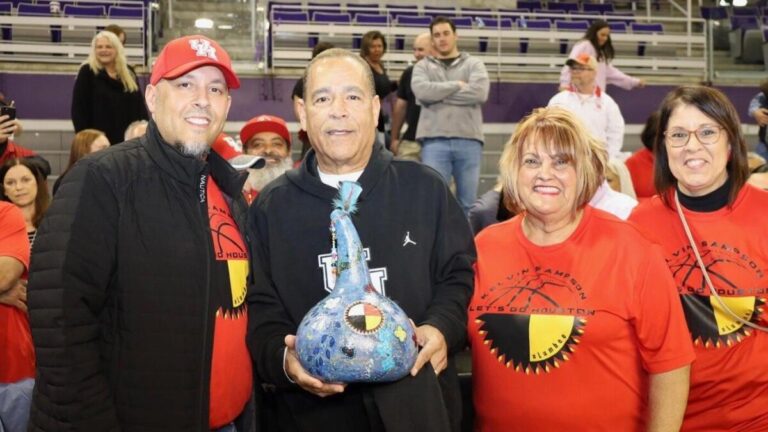Kelvin Sampson: Championing the Lumbee TribeŌĆÖs Fight for Federal Recognition
HoustonŌĆÖs Basketball Leader Elevates Lumbee Tribal Advocacy
Kelvin Sampson, the esteemed head coach of the University of HoustonŌĆÖs menŌĆÖs basketball team, is gaining recognition not only for his coaching prowess but also for his passionate advocacy on behalf of the Lumbee Tribe. As an enrolled member of the Lumbee community, Sampson is leveraging his national platform to spotlight the tribeŌĆÖs decades-long struggle for federal acknowledgment. His prominence in collegiate sports is helping to bring this critical issue into the public eye, emphasizing the tribeŌĆÖs rich cultural heritage and the tangible benefits that official recognition would provide.
Working closely with tribal officials and legislators, Sampson has actively engaged in public discussions and legislative advocacy aimed at advancing the LumbeeŌĆÖs cause. The tribeŌĆÖs campaign centers on several key objectives:
- Safeguarding cultural traditions through federal protections and funding
- Securing improved access to healthcare and educational resources for tribal members
- Affirming tribal sovereignty and self-determination rights
With growing momentum behind these efforts, there is cautious optimism that increased awareness will translate into meaningful policy progress in Congress.
Obstacles Hindering the Lumbee TribeŌĆÖs Federal Recognition
Despite being the largest Native American tribe east of the Mississippi River, with a population surpassing 55,000, the Lumbee Tribe remains without formal federal recognition. This status is crucial as it unlocks access to vital resources and legal protections. The tribeŌĆÖs path to recognition is complicated by stringent requirements imposed by the Bureau of Indian Affairs (BIA), which demand comprehensive proof of continuous tribal existence, political authority, and community cohesionŌĆöcriteria that are difficult to meet due to historical disruptions caused by displacement and marginalization.
Additionally, the Lumbee face stiff competition for congressional attention and funding, as many tribes nationwide seek similar recognition. While the state of North Carolina officially recognizes the Lumbee, this does not confer federal benefits, creating a paradox where the tribe is acknowledged locally but remains invisible at the national level. This legal ambiguity results in inconsistent access to scholarships, healthcare programs, and housing assistance typically available to federally recognized tribes.
| Challenge | Consequence |
|---|---|
| Historical Documentation | Delays in establishing continuous tribal identity |
| Federal Classification | Restricted eligibility for national tribal funding |
| Congressional Prioritization | Requires sustained advocacy and political alliances |
| Legal Status Discrepancy | Gaps in access to healthcare, education, and housing benefits |
How Athletes Amplify Indigenous Rights and Awareness
Prominent sports figures like Kelvin Sampson play a vital role in elevating Indigenous issues on a national scale. By utilizing their visibility and influence, they bring critical attention to challenges such as the Lumbee TribeŌĆÖs pursuit of federal recognition. SampsonŌĆÖs dual identity as a respected coach and tribal member uniquely positions him to advocate effectively, bridging the worlds of athletics and Indigenous activism through interviews, public speaking, and community involvement.
Key contributions of athletes in Indigenous advocacy include:
- Raising public awareness: Sharing cultural stories and histories in media and events
- Shaping policy conversations: Engaging with lawmakers and serving as Indigenous ambassadors
- Inspiring youth: Modeling pride in heritage and resilience through personal narratives
| Athlete | Tribal Affiliation | Advocacy Focus |
|---|---|---|
| Kelvin Sampson | Lumbee | Federal Recognition & Educational Access |
| Notah Begay III | Navajo | Health & Wellness Initiatives |
| Shoni Schimmel | Confederated Tribes of the Umatilla Indian Reservation | Youth Empowerment & Cultural Pride |
Effective Approaches to Supporting Indigenous Communities
Advancing the well-being of Indigenous groups like the Lumbee requires a comprehensive strategy combining legislative action with robust public engagement. Advocates stress the need for laws that rectify historical neglect and guarantee equitable access to federal programs, including expanded healthcare, education funding, and cultural preservation initiatives. Establishing advisory councils that include tribal leaders can ensure policies are responsive to Indigenous perspectives and needs.
Public outreach is equally essential in building broad-based support for federal recognition. Community-driven awareness campaigns, collaborations with media outlets, and educational workshops foster understanding and allyship among non-Indigenous populations. Below are some of the most impactful engagement tactics currently fueling progress:
| Engagement Strategy | Effect |
|---|---|
| Community Forums | Enables direct interaction between tribal members and policymakers |
| Digital Advocacy Campaigns | Generates real-time national awareness and support |
| Educational Programs | Builds informed allies and dispels misconceptions |
| Media Collaborations | Amplifies Indigenous voices and narratives effectively |
Conclusion: The Enduring Impact of Kelvin SampsonŌĆÖs Advocacy
While Kelvin Sampson continues to guide the Houston Cougars with skill and determination on the basketball court, his off-court dedication to the Lumbee TribeŌĆÖs federal recognition campaign reflects a profound commitment to his heritage. By championing this cause, Sampson is helping to elevate a vital issue that affects thousands of Native Americans, demonstrating how sports leaders can serve as powerful agents of social change. The Lumbee TribeŌĆÖs pursuit of federal acknowledgment remains a complex and ongoing journey, but with SampsonŌĆÖs influential voice amplifying their story, the movement is gaining renewed traction on a national stage.




